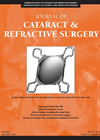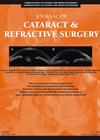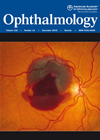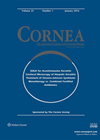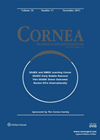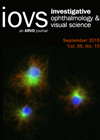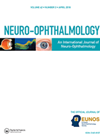
Journal Reviews archive for February 2016
Association between serum 25-hydroxyvitamin D levels and age-related cataracts
Cataractogenesis occurs as a result of ageing, smoking, exposure to UV radiation and genetic predisposition. Antioxidants can reduce the cataract risk as found in animal models and humans and vitamin D is one of them. This epidemiological study based in...
Incidence and risk factors of late in the bag intraocular lens dislocation
The aim of this study was to identify risk factors for late in the bag dislocation over a 21 year period. Worldwide the incidence varies from 0.05% to 3.0%. In this Swedish study they report an increase in incidence in...
Prophylaxis for clinical macular oedema after phacoemulsification
The authors report on a retrospective cohort study looking at three different prophylaxis methods for macular oedema after cataract surgery: 1) Topical prednisolone acetate (PA) alone; 2) Topical PA in combination with non-steroidal anti-inflammatory drug (NSAID); 3) Intraoperative subconjunctival injection...
DALK as an early therapeutic option for Acanthamoeba keratitis
Eleven patients with Acanthamoeba keratitis (AK) were treated by early therapeutic deep anterior lamellar keratoplasty (DALK). All surgeries were performed in patients who had no response to standard medical therapy of chlorhexidine gluconate, propamidine isethionate and neomycin sulphate, within 10-15...
Familial Mediterranean Fever and keratoconus
This retrospective case control study was conducted in the Genetic Diagnostic Centre in Turkey. It examined the prevalence of keratoconus in two groups; patients with Familial Mediterranean Fever (FMF) and age matched controls free of FMF, who were tested for...
Surgical complications of ReLEx
Femtosecond laser refractive lenticule extraction (ReLEx) is a novel procedure for treatment of myopia and myopic astigmatism, which eliminates the use of microkeratome and excimer laser. Currently there are two techniques: FLEx – femtosecond lenticule extraction (similar to conventional LASIK)...
How to achieve 1% solution of Lissamine green
Lissamine green (LG) concentration of 1% is clinically effective in the diagnosis of ocular surface disease. LG is now commercially available only in a form of dye-impregnated strips, whose concentration is insufficient. This study examined how to achieve 1% concentration...
Confocal microscopy and corneal graft rejection
Forty-five patients following penetrating keratoplasty (PK) were examined with the HRT III Rostock Cornea Module confocal microscope at various points after their surgery for two years. Activated keratocytes (AKs) were counted manually and their mean number evaluated. A pattern was...
Anterior segment OCT predicts gonioscopic angle closure
This is a prospective observational study of 342 subjects over four years. Sixty-five were controls who had open angles both on gonioscopy and AS-OCT, while 277 had open angles only on gonioscopy but iridotrabecular contact (ITC) on AS-OCT (one to...
RPTP-σ increases pro-MMP activity in a trabecular meshwork cell line following oxidative stress conditions
This study aims to outline the role of phosphatases in the aqueous drainage system by overexpressing receptor tyrosine phosphatase sigma (RPTP-σ) in a human normal trabecular meshwork cell line and describing its effect on subtypes of matrix metalloproteinases (MMP) and...
Amiodarone-associated optic neuropathy
This is a retrospective population-based cohort study to evaluate the risk of developing optic neuropathy from the use of amiodarone in Taiwan. Over a five-year period (2005-2009), there were 6175 amiodarone-treated patients with 24,700 patients taken as controls. After a...
A case report of bidirectional aberrant upward eye movement
The authors present a case report of a 14-year-old boy with left ptosis and strabismus since childhood. In primary position he had left hypotropia with ptosis. On elevation of the right eye, the left eye depresses and adducts. Conversely, on...

